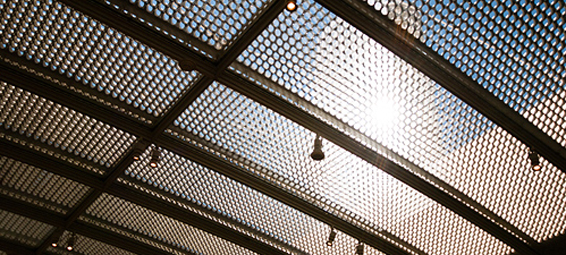In one of Tim Rogers excellent updates to his cover story about Museum Tower’s damaging impact on the Nasher Sculpture Center, he refers to the possible lack of viability of a “nuisance” claim by the Nasher. It occurred to me – that as with art copyright issues brought against artists – how inarticulate and unsophisticated American law can be when it comes to litigating issues involving art, mainly because it doesn’t know how to value art in anything other than crass commercial terms or in terms of whose property is whose.
The legalese in such issues in a society that struggles with its latent philistinism leaves attorney’s offices, or courts of law, as one of the least likely places you’d expect to find impassioned, credible, and accurate conversations about art and its societal value. How does one value great art, great buildings and institutions, beyond dollar signs?
The Leonardo that the Dallas Museum of Art is ‘auditioning for’ right now, for example: is it worth $150 million, $250 million, $400 million? How can you price such an artwork? In the end, all you know is that it’s invaluable, and that its ultimate price tag is more than just an expression of “market forces” but an approximation of ‘invaluable’. One could philosophically argue that that sole art work is more significant than any thing ever produced in Dallas, or even the sum of all of Dallas’ production.
Thus, an institution such as the Nasher is seen – in legal terms – as a neighbor with ‘sensitive’ issues – as if it’s sort of ‘highly strung,’ eccentric, or outside the norm of everyday prosaic functionalism. In other words, that art is not central to our existence, but a sort of luxury item. Try telling that to Leonardo.
To put this in functional terms that a court of law can grasp: if some developer got under Arlington Stadium to dig an underground mall (for some weird reason), and tilted the entire field by 25 degrees so that it sloped from right to left. There would be more than a nuisance claim because the playing field would become inoperable. Or what if Love Field’s air traffic was re-routed immediately above the Meyerson Symphony Center? Art and art museums’ primary requirement for functionality is light. Remove the light source or interfere with it sufficiently and you have effectively removed the building’s functionality. A conventional ‘nuisance’ claim here seems like inadequate terminology.
And a city without proper museums is not a city, it is just urban and suburban sprawl.
More specifically, arguing that we need to strengthen downtown’s green codes for glass reflectivity (to make them as demanding as Uptown’s requirements, as reported by Rogers), only give Museum Tower’s advocates cause to try to blame city codes. The upside down logic of this is about as convincing as blaming a rape victim for wearing a short skirt. The city didn’t make the developers build the tower, nor design it with sheer convex glass surfaces, nor unexpectedly double its height late in the day. The point is, that the design was inappropriate from the get-go, even though it is an otherwise handsome building.
The 17 percent differential between 27 percent reflectivity (uptown’s requirements) and 44 percent reflectivity (the Arts District’s) is not the point here at all. That would be like causing a sewage leak in someone else’s property and saying, “It’s not a nuisance because we’re only spilling 27 percent of our excrement into your building, excrement only becomes a nuisance at 44 percent.”
If someone craps in your bed, they’ve crapped in your bed. You don’t crap by degree. One either empties one’s bowels or one doesn’t. No one says, “This is first degree crapping with intent, your honor, but we’re prepared to plea-bargain down to accidental misdemeanor baby-pooping.”
Attorneys, populism…drag out a law suit for ten years – meanwhile, Dallas’ greatest, most optimistic and most functional cultural asset to date is f*cked up by a giant shiny piece of “luxury life-style”. How does one couch that in a court of law exactly? Is there a precise legal term as eloquent and descriptive as “to have completely f*cked something up, your honor”?
Photography via.





